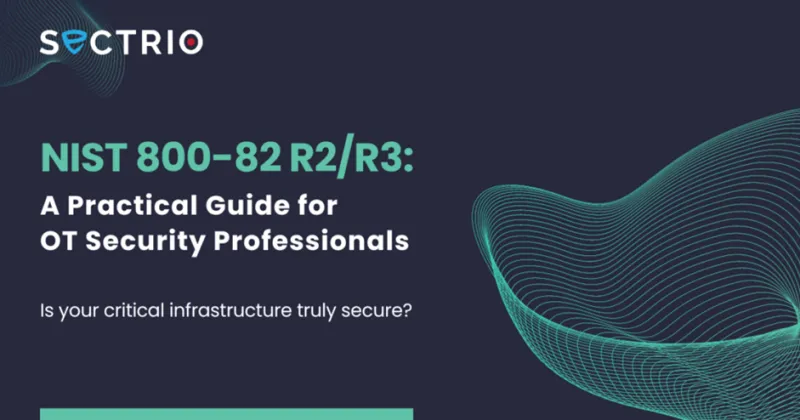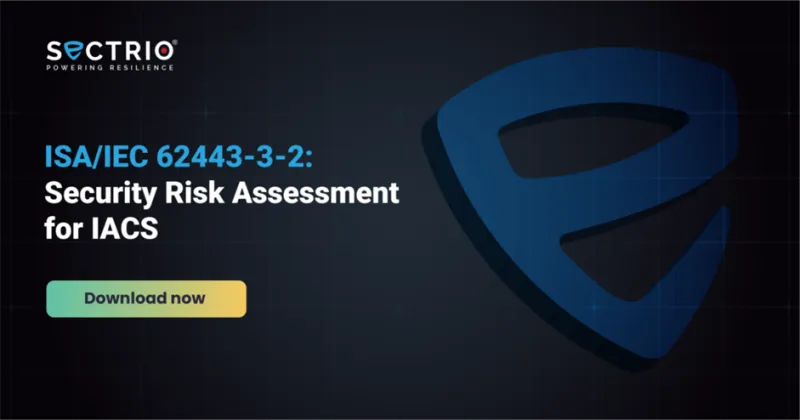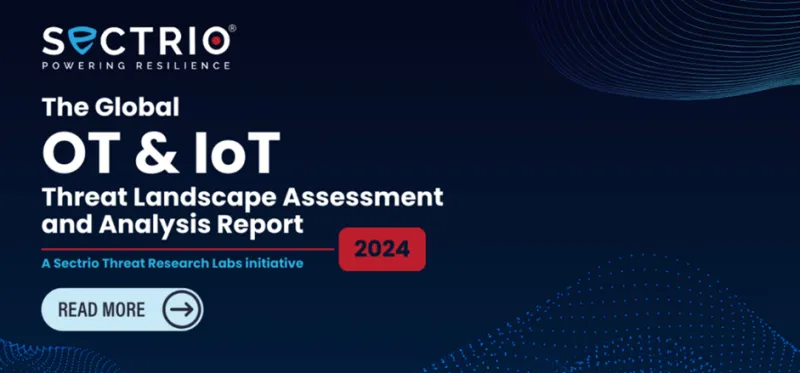Building a Cybersecurity Culture for Operational Technology Environments

In today’s world, where technology is deeply integrated into everyday operations, ensuring the security of our systems has never been more crucial. This is especially true for industries relying on operational technology (OT) to keep things running smoothly.
OT environments face unique cybersecurity challenges due to their interconnectedness and reliance on digital systems. As cyber threats develop and become more advanced, organizations must prioritize building a strong cybersecurity culture within their OT environments to protect critical infrastructure and prevent potential disruptions.
Certain critical success factors emerge as pivotal for effective functioning within this ecosystem. These include:
- The structure of the organization: Providing frameworks to support knowledge sharing
- Trust: Fostering interpersonal trust among colleagues
- Reward systems: Motivating and incentivizing behaviors conducive to knowledge transfer
- Information systems: Facilitating the conversion of data into actionable information
- Staff communication: Enabling human interactions is crucial for knowledge circulation
Organizational culture may also incorporate additional success factors such as change management, motivational techniques, knowledge management, and standard operating procedures to enhance its effectiveness further.
What Is Cybersecurity Culture?
The spirit of cybersecurity lies in safeguarding information assets against the multitude of threats that target data – processed, stored, and transmitted through interconnected information systems.
Cybersecurity culture covers the collective knowledge, beliefs, perceptions, attitudes, norms, and values individuals hold regarding cybersecurity and how these influence their behavior with information technologies.
It covers the shared mindset, behaviors, and protocols adopted by all members toward safeguarding digital assets. It warrants cultivating an environment wherein each individual, irrespective of their hierarchical position, grasps the gravity of cybersecurity and actively contributes to its reinforcement.
A robust cybersecurity culture transcends mere adherence to policies; it instills a collective sense of ownership and vigilance across the organization.
Essentially, its core aim is to cultivate and embed a robust ecosystem supportive of cybersecurity initiatives within an organization. Sharing experiences in establishing a strong social and psychological foundation can significantly strengthen cybersecurity efforts.
Why Is Cybersecurity Culture Important?
A strong cybersecurity culture serves as the first line of defense against cyber threats in OT environments. By introducing a sense of responsibility and vigilance among employees, organizations can minimize the likelihood of successful cyberattacks and mitigate their impact when they occur.
Additionally, a proactive approach to cybersecurity can enhance operational resilience and safeguard critical assets from potential disruptions.
Key Strategies for Building a Cybersecurity Culture in OT Environments
Establishing an effective cybersecurity culture is a necessity for safeguarding an organization’s assets, data, and systems against cyber threats. It revolves around developing a collective consciousness and dedication to cybersecurity best practices among all organization members.
Here are some of the key strategies that contribute to cultivating a robust cybersecurity culture:
Encourage a Collective Sense of Ownership and Accountability
Fostering a culture of responsibility and accountability ensures that every individual within the organization recognizes their role in cybersecurity. This sense of ownership fosters a more vigilant workforce.
Dispelling the notion that security is solely the responsibility of the security department is crucial. A sustainable security culture necessitates active participation from every member of the organization.
It entails instilling the belief that security is everyone’s concern, regardless of their role or position within the company. From top-level executives to frontline staff, each individual holds a stake in the organization’s security posture and culture.
Executive Commitment and Leadership
The foundation of a sound cybersecurity culture lies in the commitment and leadership demonstrated by top management. Leaders should prioritize cybersecurity, allocate resources, and serve as exemplars of security practices.
Employee Education and Awareness
Regular training sessions on cybersecurity awareness are vital for all employees. Such training equips them with the knowledge to grasp the significance of cybersecurity, identify common threats like phishing attacks, and respond effectively to security incidents.
Prioritize Comprehensive Understanding
Initiate a holistic approach to security education that extends beyond mere awareness. Begin by ensuring that every team member possesses a foundational understanding of security principles before delving into more complex topics.
Avoid underestimating the importance of this initial step, as it lays the groundwork for more nuanced threat comprehension.
Reimagine Security Education
Revamp traditional security awareness methods to make them engaging and impactful. While conventional approaches such as posters and presentations may seem mundane, they can be transformed into interactive and stimulating learning experiences. Inject creativity into the educational initiatives to captivate and inspire the team.
Merge Awareness with Accountability
Integrate accountability into the security education framework. Empower individuals with knowledge through awareness programs and subsequently hold them responsible for their actions and decisions. Recognize that people are inclined to make informed choices when equipped with the requisite understanding of security principles and risks.
Effective Incident Response
A well-documented incident response plan facilitates a swift and coordinated reaction to cybersecurity incidents. Employees should be familiar with the plan and their roles during such situations.
Promoting Incident Reporting
Building an environment where employees feel motivated to report suspicious activities or potential security incidents without fear of repercussions is crucial. This proactive reporting system, coupled with using the best password manager for business, aids in early threat detection and mitigation.
Implementing a Secure Development Lifecycle
Establishing a secure development lifecycle (SDL) serves as the base of a resilient security culture. The SDL comprises a set of processes and activities that an organization undertakes for each software or system release.
These activities include defining security requirements, conducting threat modeling, and executing security testing protocols. Essentially, the SDL delineates the operational framework for realizing the organization’s security objectives. It embodies the essence of a sustainable security culture in practice.
Comprehensive Security Policies
Establishing clear and all-inclusive security policies and procedures that align with industry best practices is essential. These policies should encompass aspects such as data handling, password management, and acceptable technology usage.
Data Protection and Privacy Compliance
A robust cybersecurity culture includes adherence to data protection and privacy regulations, along with measures to safeguard sensitive information.


Build a Security Community Network
A cohesive security community network is the foundation of a sustainable security culture within an organization. This network serves as the cable that connects individuals across different departments and levels, fostering collaboration and unity in addressing common security challenges.
By transcending the barriers of division and promoting inclusivity, the security network dismantles any “us versus them” mentality that may hinder progress.
Identify and Engage Diverse Security Stakeholders
The establishment of a strong security network requires recognizing and engaging individuals with varying levels of interest and involvement in security matters. These include security advocates, who exhibit a sincere dedication to enhancing security measures; the security-aware, who acknowledge the importance of contributing to security efforts; and sponsors, who hold influential positions in management and play a pivotal role in shaping the organization’s security trajectory.
Bringing together these diverse stakeholders into a specialized interest group focused on security cultivates a sense of community and shared purpose.

How to Identify the Cybersecurity Culture for OT Environments in an Organization?
Every organization has its own way of handling cybersecurity, whether they realize it or not. If they say they don’t, they might not be telling the truth, or the organization might not want to admit they have some problems with security.
But the good news is that any organization can make positive changes to how they approach security. It just takes time. Don’t expect everyone to become security experts overnight. With the right approach and attitude, progress can be made towards a good cybersecurity culture in OT environments.
To better understand an organization’s cybersecurity culture, consider taking a cybersecurity assessment with Sectrio. It helps identify areas where organizational security might be lacking so that corrective actions can be initiated to fix them.
Ti potrebbe interessare:
Segui guruhitech su:
- Google News: bit.ly/gurugooglenews
- Telegram: t.me/guruhitech
- X (Twitter): x.com/guruhitech1
- Bluesky: bsky.app/profile/guruhitech.bsky.social
- GETTR: gettr.com/user/guruhitech
- Rumble: rumble.com/user/guruhitech
- VKontakte: vk.com/guruhitech
- MeWe: mewe.com/i/guruhitech
- Skype: live:.cid.d4cf3836b772da8a
- WhatsApp: bit.ly/whatsappguruhitech
Esprimi il tuo parere!
Ti è stato utile questo articolo? Lascia un commento nell’apposita sezione che trovi più in basso e se ti va, iscriviti alla newsletter.
Per qualsiasi domanda, informazione o assistenza nel mondo della tecnologia, puoi inviare una email all’indirizzo [email protected].
Scopri di più da GuruHiTech
Abbonati per ricevere gli ultimi articoli inviati alla tua e-mail.
